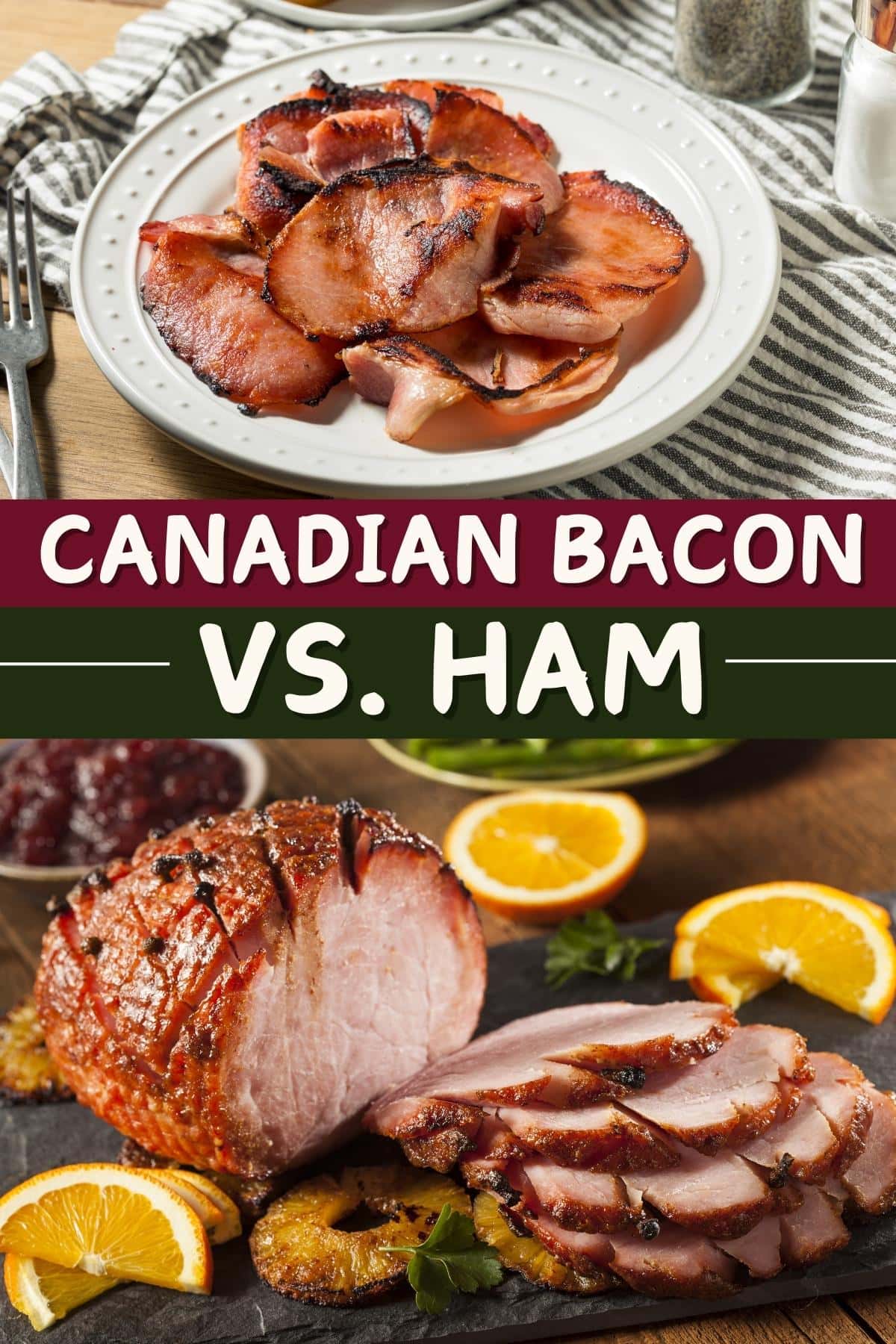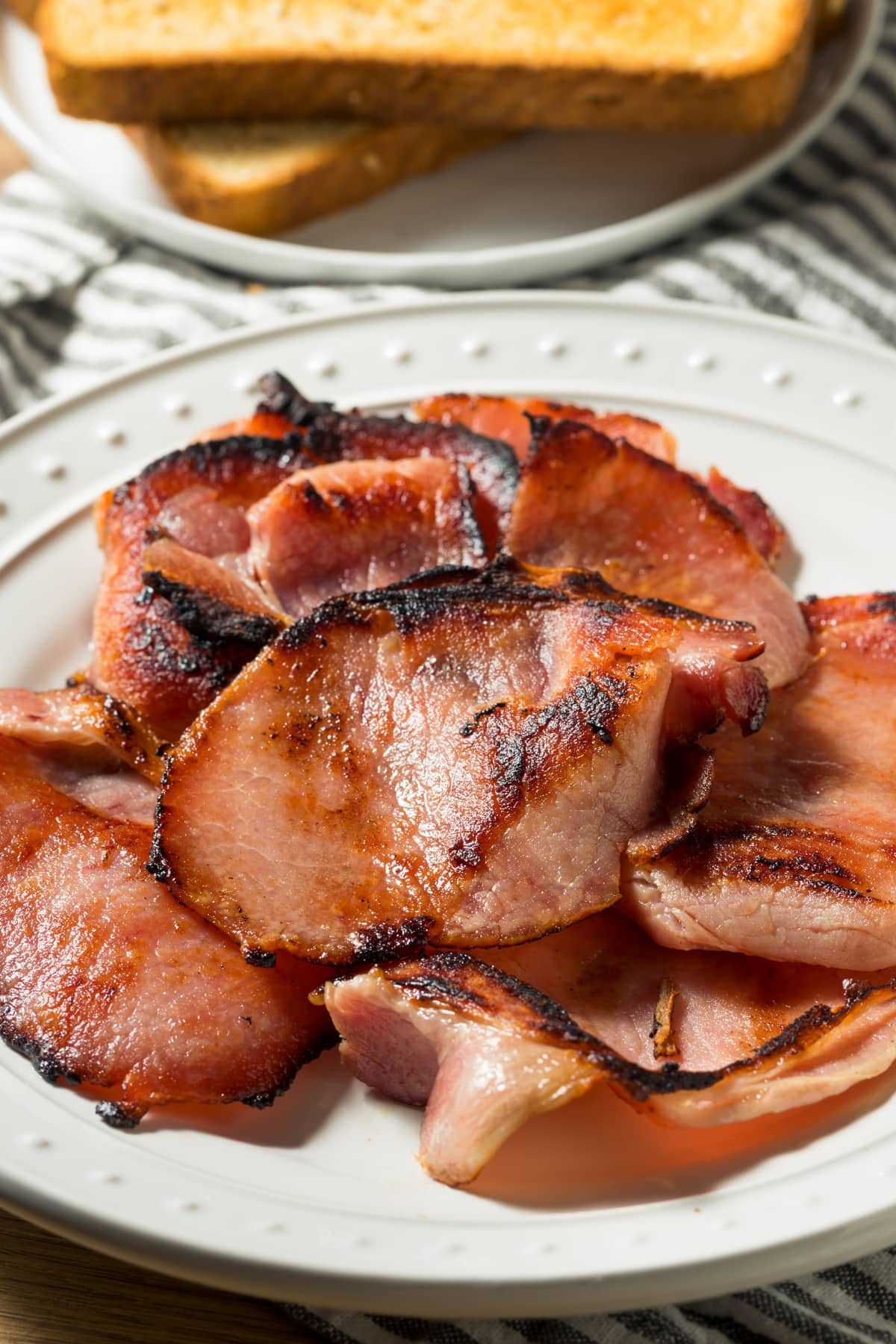When it comes to Canadian bacon vs. ham, can you tell the difference?
Spoiler alert: these are two different types of meat! Canadian bacon and ham are unique from the cut to the taste and texture.
These two beloved types of pork cause a lot of confusion. It’s actually a common belief that Canadian bacon is really ham.
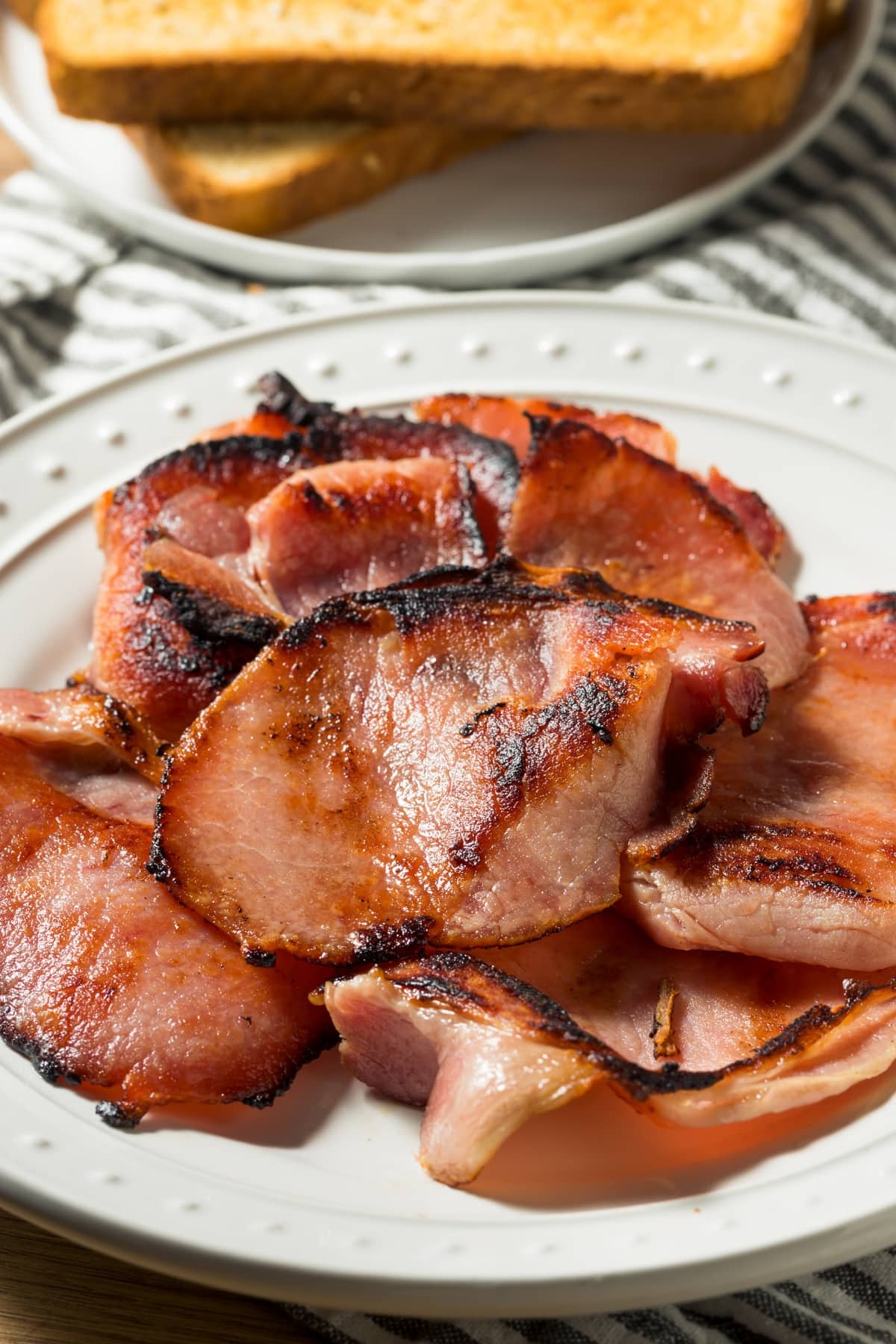
But there are several key ways to tell them apart. Preservation methods, meat cuts, and uses are just some.
Let’s take a look at Canadian bacon vs. ham so you can learn the difference. For breakfast, lunch, and dinner, you’ll know which one to choose.
What Is Canadian Bacon?
Canadian bacon is a very popular breakfast item in Canada. It’s also a beloved morning meat in America.
Nicknamed “back bacon,” Canadian bacon is pork loin cut from the back of the pig.
Curing is a key process in preparation. It helps preserve the meat and gives it flavor. After curing, it’s sometimes smoked.
Before serving, the pre-cooked meat requires some heat. So pan-fry, grill, or bake it before you dig in.
Canadian bacon is a lean, soft, and sweet breakfast treat.
Why Is It Called Canadian Bacon and Not Ham?
A common and perplexing question is why it’s called Canadian bacon. The reason has to do with origin and eating time.
Canadian bacon is from Canada, where it’s mainly served for breakfast. Hence, the name Canadian bacon.
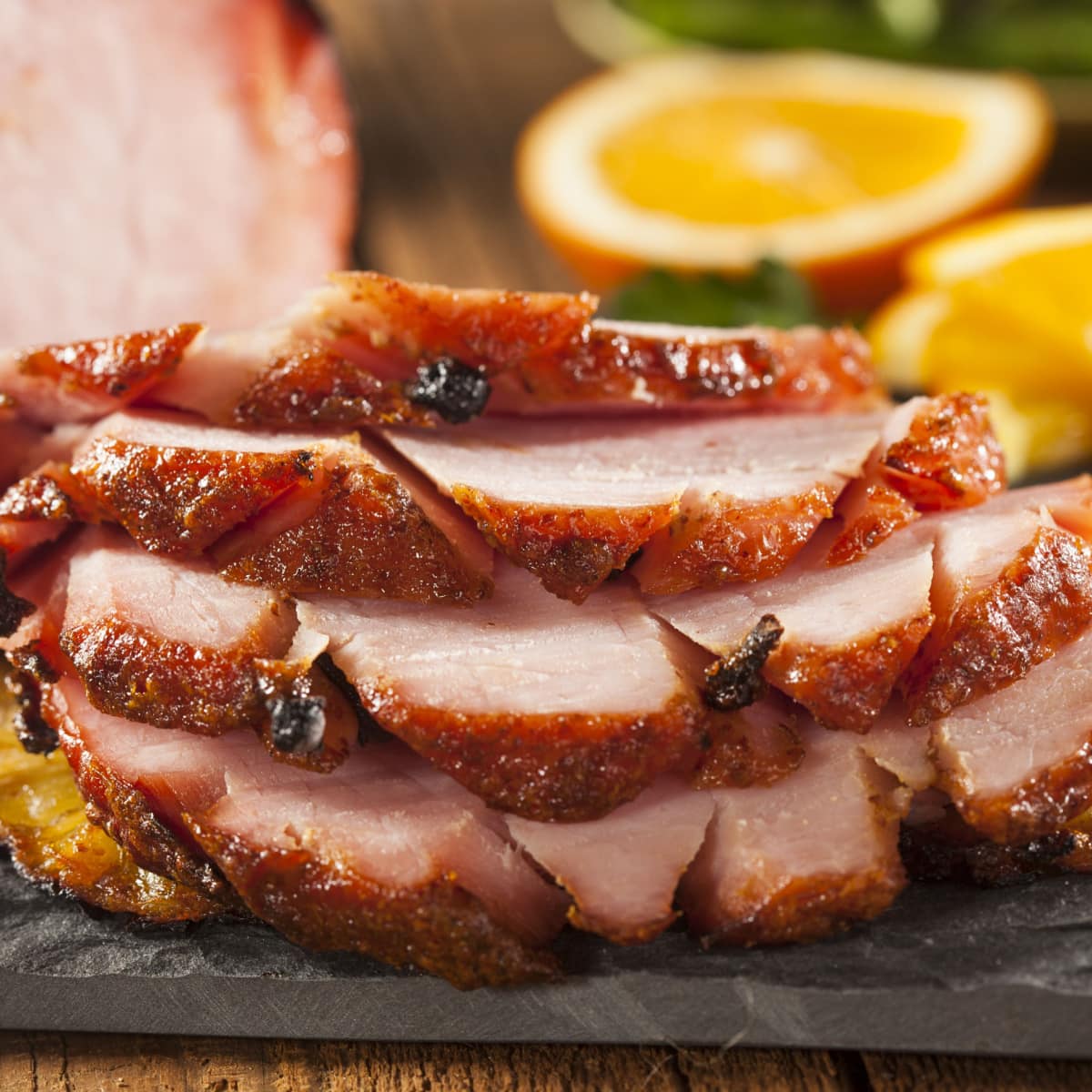
What Is Ham?
Ham is a pork cut from the pig’s back legs.
Like Canadian bacon, it undergoes a curing process with salt, sugar, and spices. Sometimes, ham also gets brined or smoked.
The flavor will vary depending on the preparation method. Typically, ham is slightly sweet, salty, savory, and chewy.
It’s also fattier than Canadian bacon because of the cut. Speaking of cut, you can slice it thick or thin.
Ham also comes in many types. Here are a few to try:
- Jamón serrano. A popular Spanish dry-cured ham perfect for tapas night.
- Country. A popular salt-cured Southern-style ham aged from one to three months. Typically, it’s smoked, though some states have unsmoked versions.
- Glazed. Coating ham in a sweet glaze is an American tradition. Coca-Cola, honey, and maple syrup are some favorite sauces for ham.
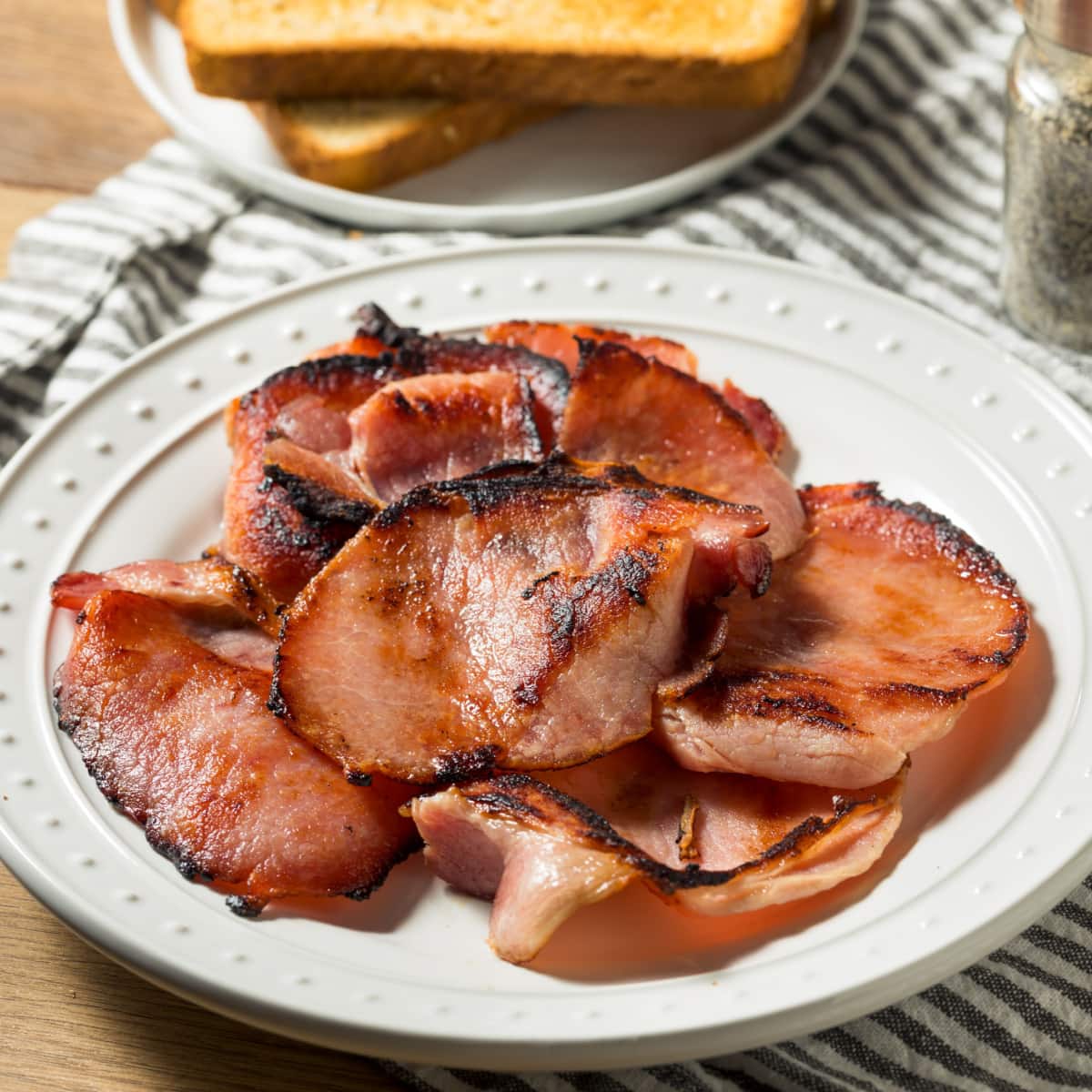
Canadian Bacon vs. Ham (What’s the Difference?)
Canadian bacon and ham have many similarities. Sometimes, you can even use them interchangeably.
But some clear distinctions make one different from the other. Here are the six main ways to tell them apart.
1. Meat Cut
Both are a type of pork. But the biggest distinction between them is they come from two different cuts.
Canadian bacon is pork loin. This cut comes from the back of the pig, so it’s one of the leaner cuts with less marbling.
Ham comes from the hind legs. It’s a large cut taken from the top of the leg.
2. Shape
If you go to the grocery store, you’ll see ham and bacon in all different shapes and sizes. So it can be difficult to tell the variety of cuts apart.
But in general:
- Canadian bacon slices have a circular shape. You can find both thin and thick slices. Ham varies, depending on the preparation.
- Freshly carved ham is thick and oval or irregular. The shape of the cut depends on who’s slicing it.
- Deli-style slices are round and thin. They’re the perfect shape for slapping on a sandwich or rolling for a snack. A prime example is your classic holiday ham!
- Diced ham is cube-shaped. This shape is great for pasta, casseroles, mac and cheese, and more.
3. Preservation Method
Both types of meats undergo a curing process. This involves using a mix of salt, sugar, and spices to preserve the meat.
- Preserving ham may or may not include brining.
- For Canadian bacon, brining is an absolute must.
Salt and maple syrup typically make up the brine for the latter. Ham often has herbs and spices added to the mix for flavor.
Occasionally, ham gets smoked to impart more depth and flavor. But smoking is less common for Canadian bacon.
4. Taste
If you’ve ever tried different types of steak, you know where it comes from on the cow affects the taste.
The same goes for the cut of pig and the preservation method of ham and Canadian bacon. These translate to differences in flavor.
Canadian bacon is sweet, soft, lean, and less salty.
Sometimes, it’s also coated in ground yellow peas or cornmeal. Also known as peameal bacon, the coating gives it more texture.
Ham is slightly sweet, salty, tender, and sometimes smoky.
There are also more styles of ham. Black Forest, Country, and City are just a few. So, the flavor will vary more.
5. Eating Time
Canadian bacon is a breakfast and brunch staple.
No picture-perfect eggs Benedict is complete without it. A thick slice is also great with a couple of sunny-side-up eggs.
Ham is more commonly served for lunch and dinner. It’s a quick filler for a sandwich and creates a stunning holiday centerpiece.
6. Ways of Serving
Canadian bacon needs to be cooked before it’s eaten. Grilling, baking, and pan-frying are some common ways of cooking it.
It’s excellent on a breakfast sandwich and great as a breakfast side.
But you don’t have to stick to only enjoying Canadian bacon in the morning. It’s a key topping for Hawaiian pizza.
You can also use it as a bacon substitute in a BLT.
Ham is more versatile and can be found in sandwiches, pasta, and more. For example:
- Baked ham is an iconic holiday centerpiece.
- Deli-style slices make a meat lover’s sandwich complete.
- Cubed ham is a prime addition to kid-friendly pasta.
You can reach into the fridge and grab a slice for a quick snack. Cold or hot, ham is excellent either way.
It’s found in sandwiches, pasta, quiche, omelets, casseroles, and more.
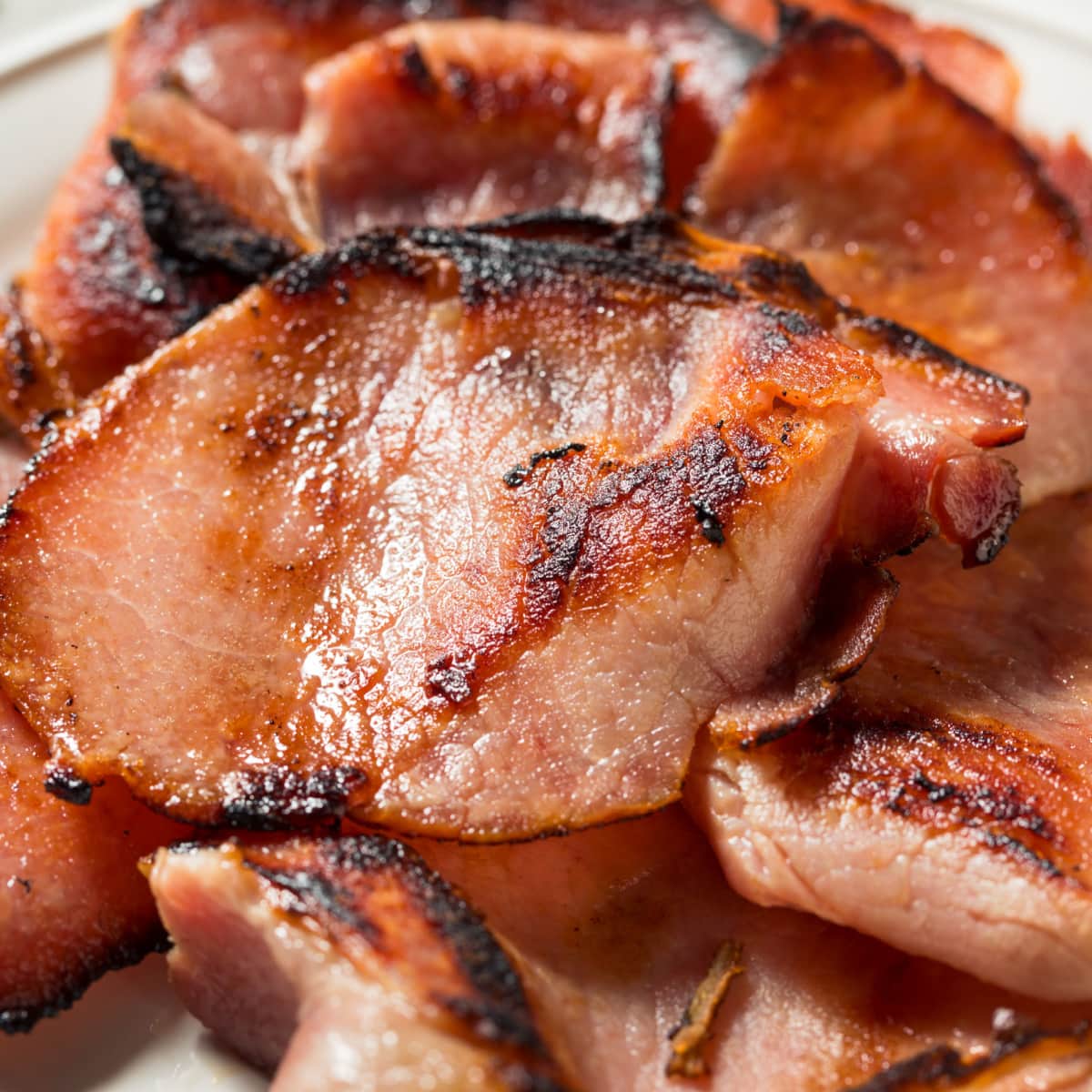
Can You Substitute Canadian Bacon for Ham and Vice Versa?
Yes, you can substitute one for the other. But like all substitutions, there are some things to keep in mind:
- Canadian bacon dries out the longer you cook it. So, be mindful of your cooking time.
- When using ham as the substitute, consider using a center cut. It will have the closest flavor to Canadian bacon.
- Canadian bacon isn’t a good substitute for holiday ham. You also won’t want to use ham for a leaner pork cut.
Canadian Bacon vs. Ham (Which Is Better?)
Is one meat better than the other? Both are better for different reasons.
Canadian bacon is the healthier option. It’s less salty and leaner, so you consume less sodium and fat.
As for versatility, ham wins by a long shot.
Baked, brined, smoked, cubed, glazed, and deli-sliced, ham varies in preparation. This means there are more things you can do with it.
It also has a savory, salty, fatty flavor many people want from pork.
What it comes down to is what you’re making and craving. Those two factors will decide which is better for your meal.
